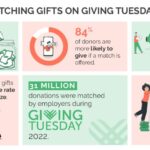
Several policy changes implemented during Covid-19 — including the Medicaid continuous enrollment provision and enhanced Marketplace tax credits — made healthcare more affordable, a new analysis shows.
In 2020, the continuous enrollment provision was put in place to prevent states from disenrolling Medicaid beneficiaries during the public health emergency, even if they were no longer eligible. States began unwinding this provision in April 2023 and as of June 28, nearly 23.8 million people have been disenrolled from Medicaid. In addition, the American Rescue Plan Act of 2021 raised premium tax credits for Marketplace enrollees with family incomes ranging from 100% to 400% of the federal poverty level. It also expanded subsidy eligibility to include individuals with incomes exceeding 400% of the federal poverty level. The subsidy enhancements were extended through 2025.
The analysis, conducted by the Urban Institute with support from the Robert Wood Johnson Foundation, examined how these policy changes affected health insurance coverage and healthcare affordability. The researchers analyzed 2019-2022 data from the National Health Interview Survey.
They found that between 2019 and 2022, the share of uninsured adults fell from 14.5% to 12.4%. In states that expanded Medicaid between 2019 and 2022, the share of uninsured adults declined from 17.2% to 11%. There were also major decreases in uninsurance for those with family incomes below 138% of the federal poverty level (27.9% to 23.7%) and those between 138-249% of the federal poverty level (23.2% to 20.6%).
The researchers also discovered a decline in the share of adults who delayed or ditched necessary medical care due to cost: from 12.1% in 2019 to 9.7% in 2022. This represents 4.75 million fewer adults.
Similar to the decrease in uninsurance rates, the most significant reductions in barriers to care due to costs were observed in states that expanded Medicaid between 2019 and 2022 (from 15.7% to 10%), as well as adults with family incomes below 138% of the federal poverty level (from 20.3% to 14.9%) and those with incomes between 138-249% of the federal poverty level (from 18.4% to 14.9%).
Furthermore, the share of adults who did not get needed prescription medications or did not take their medications as prescribed due to cost fell from 9.8% in 2019 to 7.5% in 2022.
While there were advancements in healthcare affordability during the Covid-19 pandemic, there may be difficult times ahead.
“Our findings show significant improvements in health insurance coverage and healthcare access under federal and state policy changes enacted during the public health emergency,” said Michael Karpman, principal research associate at the Urban Institute, in a statement. “The continued unwinding of the Medicaid continuous coverage requirement and the potential expiration of enhanced Marketplace subsidies after 2025 could make these gains in coverage and access difficult to sustain.”
Kathy Hempstead, senior policy adviser at the Robert Wood Johnson Foundation, added that “policymakers should build upon pandemic-era policies that expanded access to coverage and reduced health disparities.”
Picture: Designer491, Getty Images
#Report #Covid19 #Policy #Healthcare #Affordable










